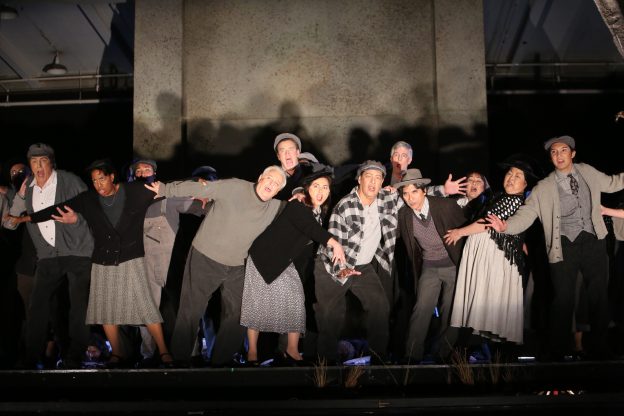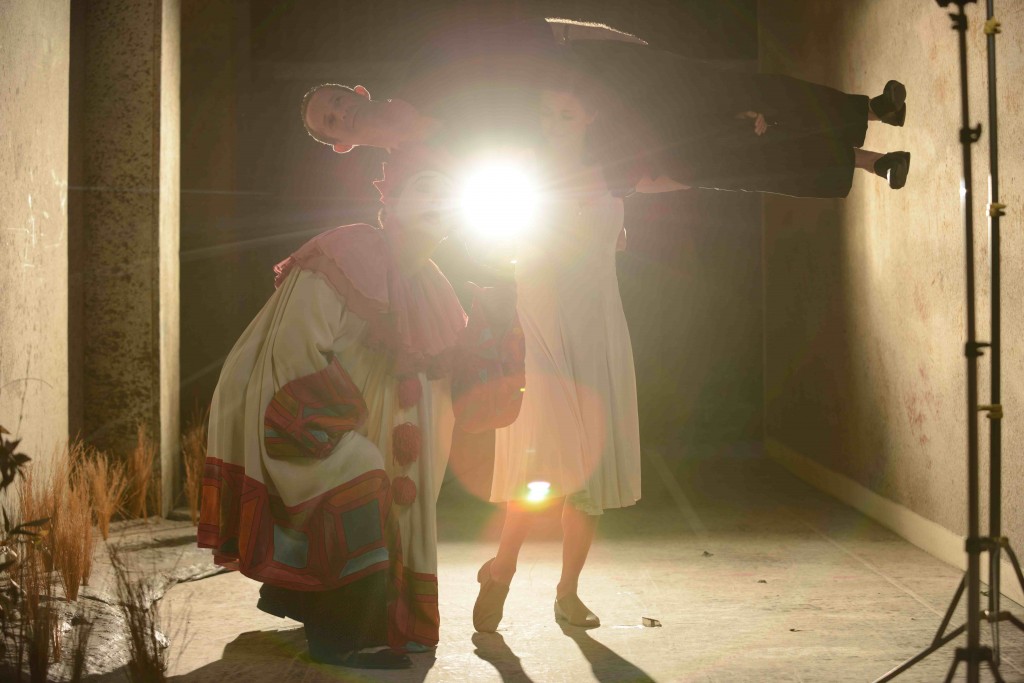
Honolulu Star-Advertiser Review – Pairing of ‘Pagliacci’ & ‘Carmina’ enhances both
The world had become so used to “Cav & Pag” (the century-old pairing of Mascagni’s “Cavalleria Rusticana” with “Pagliacci”) that audiences had stopped thinking about either work in any depth. Together, they were the conventional, static example of late-19th-century “verismo.”
The new pairing, originally produced by Portland Opera in 1997 and re-created here for Hawaii Opera Theatre, vaults “Pagliacci” and “Carmina” into a new realm, offering a new perspective and highlighting their symbolism.
This production by Hawaii Opera Theatre and directed by Roy Rallo is a “must-see” for first-time opera-goers as well as for aficionados.
Although historically unrelated, and sharing only one scene, both works benefit from the juxtaposition: “Carmina” becomes a commentary on “Pagliacci,” and “Pagliacci” anchors the varied poems/scenes of “Carmina” as an example of how its themes unfold in life. Each deepens our understanding of the other.
The audience enters Blaisdell’s concert hall to face an open, curtainless stage dominated by the so-called “ghost light,” a single exposed bulb left lit on an empty stage whenever the theater is “dark” (not in use). The story begins with an explanatory prologue to set the tone, a character strolling casually on stage, asking, “May I?”
HAWAII OPERA THEATRE
“Pagliacci”/ “Carmina Burana”
Blaisdell Concert Hall
» 4 p.m. Sunday
» 7 p.m. Tuesday
Tickets $29-$120 at ticketmaster.com
“Pagliacci” (1892) is a play-within-a-play tale of love and jealous murder played out both by and among a troupe of itinerant actors.
That play-within-a-play theme is reflected throughout Allen Moyer’s stage design, with its half-walls, partial backdrops, stage lights in plain view, and a performance area demarcated on a raised platform on a stage, within a theater, on the theater stage of life. The audience remains continually aware of the interplay between drama and reality, comedy and tragedy, humor and violence, each pair two sides of the same coin.
In “Pagliacci” (“The Players”), each of the stock characters has multiple aspects: Pagliaccio is played by Canio, head of the troupe (sung for HOT’s production by tenor Kip Wilborn); Columbina is played by Canio’s wife, Nedda (sung by soprano Elizabeth Caballero); Taddeo is played by Tonio, the hulking fool (sung by baritone Louis Otey); and Arlecchino is played by Beppe (sung by tenor Nathan Munson).
Tellingly, it is easier to just forget all the names and roles, characters and traditions, and let the boundaries dissolve.
By the end, Nedda and her lover, Silvio, lie dead; Canio stands alone, his honor regained through murder but his love lost; and Tonio, having had his bitter, hopeless revenge, intones, “La commedia è finita” (“The comedy is finished”), referring to all meanings of comedy, play drama, the comedy of life, the comedy that means tragedy, Dante’s divine comedy, and so on.
“Carmina Burana” is not an opera at all but a genre-bending collection of orchestra-accompanied choral and solo songs on fate and the meaning of life, divided into three sections bound together by the chorus “O Fortuna” to the goddess of destiny at beginning and end. In this production, “Carmina” is staged through dance.
“Carmina” begins with the final scene in “Pagliacci” — the minimal, rustic setting that featured the troupe’s battered old truck transforms into a world turned on its side: The tree from “Pagliacci” swings up to tilt sideways, so the songs/dances play out in the space between the treetop and the “ever-changing moon,” a large white orb lit to reflect various moods.
The cast for both works was stellar.
“Carmina” was choreographed to spectacular effect by Jamey Hampton and Ashley Roland, who wove in themes immemorial from folk dance and the Garden of Eden, and was beautifully performed by BodyVox of Portland, Ore.. The impact was mesmerizing sensory overload, well worth seeing/hearing multiple times.
Caballero (also the soprano soloist in “Carmina”) was terrific, her large, clear voice soaring free as the birds she admires, making her characters dominant throughout.
Wilborn’s “Vesti la giubba” (the famous aria about laughing for the world while crying inside) did not quite have the power that makes the aria so very wrenching, but his lyric tenor, combined with his excellent acting, captured Canio’s internal macho conflict. Otey, physically menacing but with a dark, robust voice, made a surprisingly sympathetic villain.
Garland and Munson were excellent in “Pagliacci” but especially so in “Carmina,” when they had their major solos. Munson’s murderously high “roasted swan” song was the most striking: no one will ever forget its shadow-puppet technique with blood splattered across the screen and the image of being eaten.
The very active Chorus supplied a major role in both works, and the Kuho‘okahi Ensemble of the Hawaii Youth Opera Chorus, with their pure, crystalline tone, provided a musical highlight.
Conductor Hal France kept tight pacing and balance, and although the orchestra delivered lovely moments, especially in “Carmina,” articulation, intonation and ensemble were frequently rough. There were, however, noteworthy solos, including the flute solo for the circle dance in “Carmina,” which sounded like Susan McGinn.
The production lasts just over three jam-packed hours filled with charming nuances, including expert juggler Andrew Towl, choreographed jokes, and staging that evoked laughter or groans.
In the end, the lead singers are trampled by the choral crowd, which is then crushed by the wheel of fate, turning once again: “O Fortuna, velut Luna, statu variabilis …” (“Oh Fortune, like the moon ever-changing …”)
—-
By Ruth Bingham
Special to the Star-Advertiser / March 30, 2014

